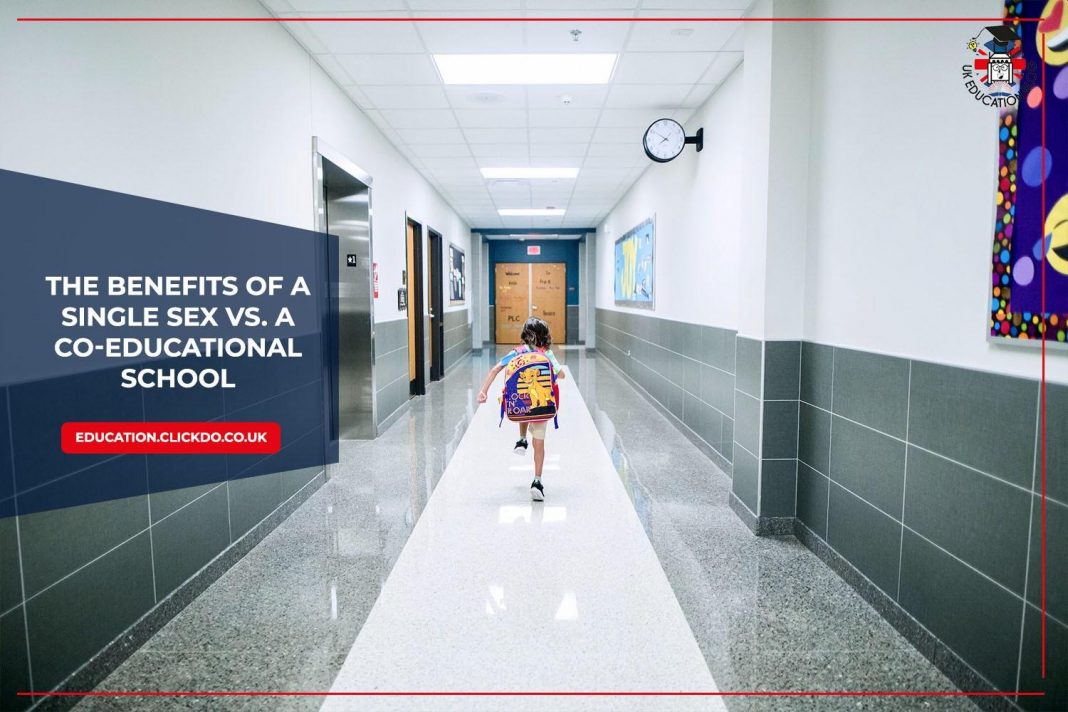When the time comes to start thinking about options for your child’s schooling, one of your key considerations will probably be whether you would like to send them to a single-sex school or a co-educational one.
There’s no right or wrong answer, as there are pros and cons to each, so the decision will be entirely based on your own preference.
However, we have teamed up with an independent girls’ school in Hertfordshire to share some of the benefits of each to help you make up your mind.
Benefits of Single-Sex Schools

It is assumed that boys and girls each have their own set of requirements when it comes to the support they receive.
Essentially, they learn differently and need to be helped in different ways, so it would make sense for them to be taught separately. In single-sex schools, the curriculum can be tailored specifically to the gender of the students in a way that inspires and motivates them to learn. However, those who are pro-co-ed would argue that the differences between the way boys and girls learn are an overstatement because their brains are similar enough to respond well to the same teaching style.
Supporters of single-sex education also claim that these types of schools quash gender boundaries, allowing all children to explore different interests and hobbies without being forced into any particular stereotypes or feeling insecure about trying new things. Boys can explore the arts, for instance, and girls can pursue traditionally male sports. In girls’ schools, students are able to speak out without social consequences, which encourages them to be themselves and develop their personhood without judgment.
Another argument for single-sex education is that, particularly during teenage years when hormones are raging, the opposite sex can be quite the distraction. Segregating between genders limits this distraction so that children are able to focus on their education whilst they’re in the classroom, rather than on their love lives.
Benefits of Co-educational Schools

Many people would argue that a single-sex school is not reflective of real life, so, therefore, doesn’t prepare students well enough for the outside world.
To elaborate, a child that has attended an all-boys school might struggle to work well with women when they eventually start pursuing a career, and vice versa. Single-sex schools shelter children in this sense and prevent them from developing their social skills to the fullest extent.
Furthermore, there is the argument that a diverse learning environment can enrich a student’s learning experience because it allows them to challenge one another’s way of thinking and create a sense of balance. In areas where boys typically excel, they will raise the bar for girls and encourage them to excel as well and vice versa.
However, those who are pro-single-sex education would argue that students still have the opportunity to interact with the opposite sex through extra-curricular activities and other personal endeavors.
Final Verdict
So, as you can see, both options have their advantages and disadvantages. If you don’t feel strongly either way, there are plenty of other factors you should consider about the public or private schools in your area that should help you make your decision, like what the curriculum and co-curricular offers, where the school stands in the league tables, and whether or not it feels welcoming and a good fit for your child. Do your research and pay some schools a visit before you make your final decision or arrange a trial for your child.
Author Profile

- Shirley Owen is a blogger and writer who enjoys writing blogs on education, technology and general news. An avid reader, she follows all the latest news & developments to report on them through her articles.
Latest entries
 educationDecember 11, 2025Making Education Accessible for Mobile Families that Travel
educationDecember 11, 2025Making Education Accessible for Mobile Families that Travel learningOctober 28, 20257 Daily Classroom Strategies Helping Children With Learning Differences Thrive
learningOctober 28, 20257 Daily Classroom Strategies Helping Children With Learning Differences Thrive  ed techSeptember 29, 2025How to use VR to Ace your next Exams
ed techSeptember 29, 2025How to use VR to Ace your next Exams educationSeptember 18, 2025A Guide to the European Accessibility Act for Schools and Universities
educationSeptember 18, 2025A Guide to the European Accessibility Act for Schools and Universities







